Getting Through Stucco: A Step-by-Step Guide to Drilling Holes

If you find yourself needing to drill holes in stucco, it’s important to approach the task properly to avoid damaging the surface and ensure that your holes are precise. Stucco is a popular exterior finish due to its durability and aesthetic appeal, but it can present challenges when it comes to drilling. This step-by-step guide will walk you through the process of drilling holes in stucco, from selecting the right tools and materials to executing the task with precision.
Before you begin drilling, it’s crucial to gather the necessary tools and materials. You’ll need a power drill with a masonry drill bit specifically designed for stucco, which typically has a carbide tip for enhanced drilling performance. It’s also important to wear safety goggles and gloves to protect yourself from any flying debris. Additionally, you’ll need a pencil or marker to mark the desired location of the holes on the stucco surface.
Once you have your tools and materials ready, it’s time to start drilling. Begin by holding the drill perpendicular to the stucco surface, applying light pressure to make a small pilot hole. This will guide the rest of the drilling process and help prevent the stucco from cracking or chipping. Make sure to use a slow speed setting on your drill to avoid exerting too much force on the stucco and causing damage.
As you continue drilling, periodically remove the drill bit to clear any debris that may accumulate in the hole. This will prevent the bit from becoming clogged and ensure smooth drilling. It’s important to be patient and maintain a steady hand throughout the process to achieve clean, precise holes. By following these step-by-step instructions, you can successfully drill holes in stucco without compromising the integrity of the surface. Whether you’re installing outdoor lights, hanging decorations, or conducting repairs, this guide will help you navigate the challenges of drilling through stucco with confidence.
Preparing for the Task
Before you begin drilling holes in stucco, it is important to take the necessary steps to prepare for the task. Following these preparation steps will help ensure a successful drilling process and minimize any potential damage to the stucco surface.
1. Gather the necessary tools and materials
- A power drill
- Masonry drill bits
- Masking tape
- Measuring tape
- Marker or pencil
- Protective goggles
- Dust mask
Make sure you have all the required tools and materials ready before starting the drilling process. This will save you time and ensure that you have everything you need to complete the task.
2. Identify the location of the holes
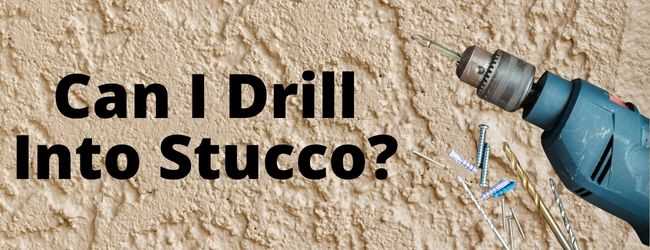
Determine the location where you need to drill the holes. Use a measuring tape and marker or pencil to mark the exact spots on the stucco surface. Take into consideration the purpose of the holes and make sure they are placed in the right positions.
3. Clear the area around the drilling site
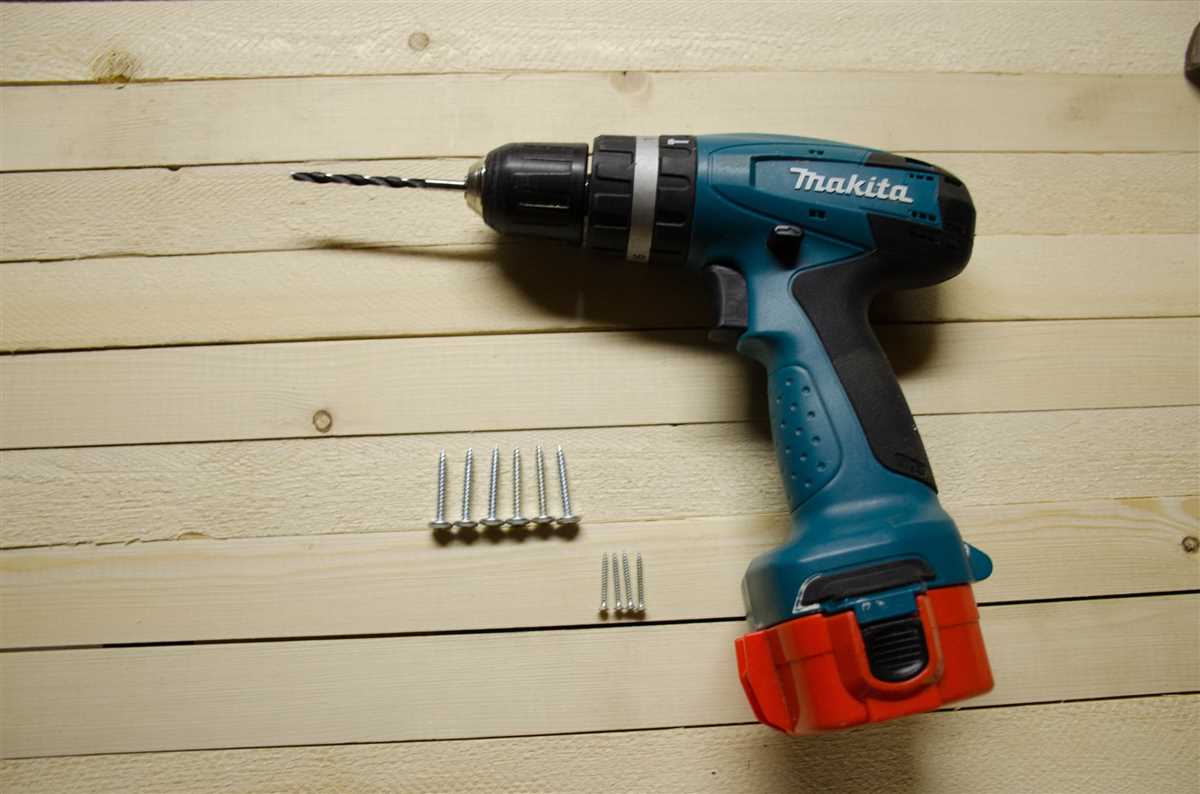
Remove any obstructions or items near the drilling site that may interfere with the drilling process. This will provide you with a clear working area and prevent any damage to surrounding objects during the drilling process.
4. Protect the surrounding stucco surface
Apply masking tape around the drilling area to protect the surrounding stucco surface from potential damage. This will help prevent chipping or cracking of the stucco during the drilling process.
5. Wear appropriate safety gear
Put on protective goggles and a dust mask to protect your eyes and lungs from dust and debris generated during drilling. This is essential for your safety and will prevent any potential health hazards.
Choosing the Right Drill Bit
When it comes to drilling holes in stucco, choosing the right drill bit is crucial. The type of bit you need will depend on the material you are drilling into and the size of the hole you want to create. Here are some factors to consider when selecting a drill bit:
1. Material
Consider the material you are drilling into. Stucco is a hard and brittle material, so you will need a drill bit that is designed specifically for masonry or concrete. These bits are typically made from carbide or diamond, which are strong enough to penetrate the stucco without chipping or breaking.
2. Hole Size
Determine the size of the hole you want to create. Most drill bits come in standard sizes, ranging from 1/8 inch to 1 inch or larger. For smaller holes, you can use a standard masonry bit. However, for larger holes, you may need to use a hole saw or a core drill bit.

3. Shank Type
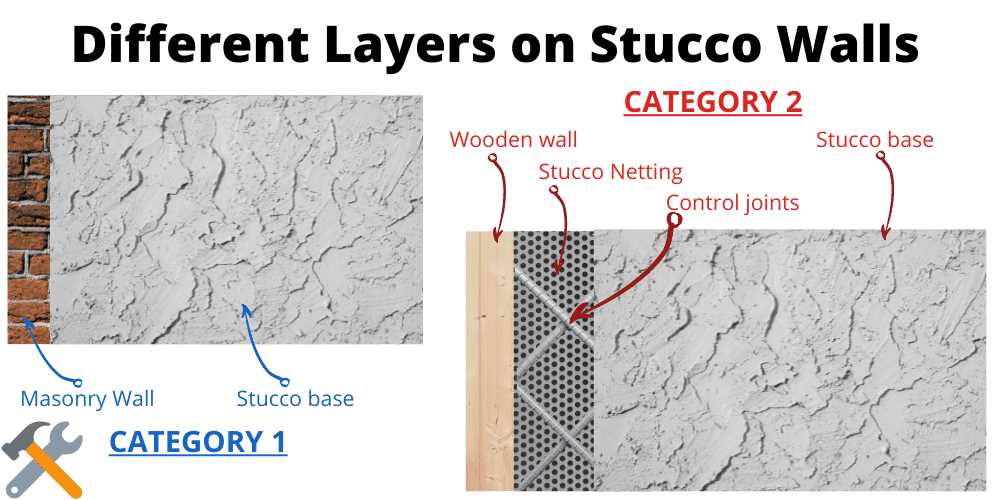
Consider the shank type of the drill bit. The shank is the part of the bit that fits into the drill. Most masonry drill bits have a straight shank, which allows them to be used with a variety of drills. However, some drill bits have a hex shank, which can provide better grip and stability when drilling into stucco.
4. Brand and Quality
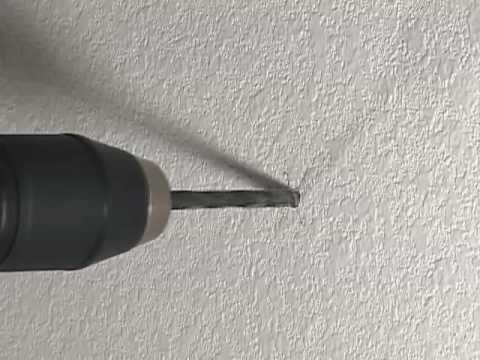
Pay attention to the brand and quality of the drill bit. Investing in a high-quality drill bit from a reputable brand can make a significant difference in performance and durability. Cheaper drill bits may wear out quickly or not provide the necessary cutting power for stucco.
5. Coating
Consider the coating of the drill bit. Some masonry drill bits have a coating, such as black oxide or titanium nitride, which helps to reduce friction and heat during drilling. This can prolong the life of the drill bit and make the drilling process smoother.

6. Speed and Pressure
Keep in mind that drilling into stucco requires slower speeds and lower pressure compared to drilling into wood or metal. This is to prevent the stucco from chipping or cracking. Be sure to adjust your drill’s speed and apply gentle pressure to avoid any damage to the stucco surface.
By considering these factors and choosing the right drill bit, you can ensure a successful and smooth drilling process when working with stucco.
Marking the Hole Location
Before you begin drilling into stucco, it’s important to accurately mark the location where the hole will be made. This will help ensure that you drill in the right spot and avoid any unnecessary damage to the surface.
Here are the steps to mark the hole location:
- First, determine where you want the hole to be placed. Measure and mark the spot with a pencil or marker.
- Use a level to make sure the mark is straight and aligned with the desired position.
- If you are drilling multiple holes, use a tape measure or ruler to ensure consistent spacing between the marks.
- If the stucco surface is rough or uneven, you can use masking tape or painter’s tape to create a smooth surface for marking. Apply the tape to the area where the hole will be drilled and mark the spot on the tape instead of directly on the stucco.
Remember to take your time and be precise when marking the hole location. Rushing or making mistakes at this stage can result in unnecessary damage or inaccurately positioned holes.

Once you have marked the hole location, you are ready to proceed with the next step: preparing the drill and selecting the right drill bit.
Protective Gear and Safety Precautions
Safety First
When drilling into stucco, it is important to prioritize safety to prevent accidents and injuries. Follow these safety precautions to ensure a safe drilling experience:
- Wear safety goggles to protect your eyes from flying debris.
- Wear a dust mask to prevent inhaling potentially harmful dust particles.
- Wear work gloves to protect your hands from sharp edges or materials.
- Wear ear protection if the drilling noise is too loud.
- Work in a well-ventilated area to avoid inhaling excessive dust.
Proper Gear
Here are some essential tools and gear you should have when drilling into stucco:
- A quality drill with adjustable speed settings
- Stucco drilling bit or carbide-tipped masonry bit
- Measuring tape or ruler
- Carpenter’s pencil or marker for marking drilling points
- Masking tape or painter’s tape to create a drilling guide
- Anchors and screws for fastening objects to the stucco
- A vacuum or broom for cleaning up dust and debris
Preparation
Before drilling into stucco, make sure to take the following preparation steps:
- Identify the location where you want to drill and ensure there are no electrical or plumbing lines behind the stucco using a stud finder or utility locator.
- Mark the drilling points with a pencil or marker.
- Cover the surrounding area with drop cloths or plastic sheets to catch any debris or dust.
- Create a drilling guide by placing a piece of masking tape or painter’s tape over the marked points. This helps prevent the drill bit from slipping and provides a smooth drilling surface.
Safe Drilling Techniques
When drilling into stucco, use the following techniques to ensure a safe and successful drilling process:
- Start with a small pilot hole to guide the larger drill bit. This helps prevent the stucco from chipping or cracking.
- Use gentle and even pressure while drilling. Let the drill bit do the work and avoid forcing it.
- Take breaks if needed to prevent the drill from overheating.
- Remove the masking tape or painter’s tape after drilling.
By following these protective gear and safety precautions, you can drill into stucco safely and effectively. Remember to always prioritize safety and take necessary precautions to minimize any risks.
Drilling Technique for Stucco
Drilling into stucco requires special techniques to prevent damage to the material and ensure the success of your project. Follow these steps to drill holes in stucco:
1. Choose the right drill bit
Stucco is a hard and brittle material, so it’s important to use the right drill bit to avoid cracking or chipping. A masonry drill bit made of carbide or diamond is ideal for drilling into stucco. These bits are designed to handle the hardness of the material and are less prone to wear and tear. Avoid using regular twist drill bits, as they are not designed for masonry work and may cause damage to the stucco.
2. Mark the drilling location
Before drilling, mark the exact location where you want to drill the hole. Use a pencil or marker to make a small dot or a cross on the stucco where the hole should be. This will help you to maintain accuracy and prevent unnecessary drilling. If you need to drill multiple holes, use a measuring tape or ruler to ensure they are spaced evenly.
3. Protect the surrounding area
To protect the surrounding area from damage or debris, cover it with a drop cloth or plastic sheet. This will prevent any chips or fragments from falling onto the ground or nearby surfaces. Use painter’s tape to secure the cover and ensure it stays in place during the drilling process.
4. Use a low speed setting
Set your drill to a low speed setting to prevent the stucco from cracking. High speeds can generate excessive friction and heat, which can damage the stucco surface. Start drilling at a slow speed and gradually increase the speed as needed. Take your time and apply steady pressure to maintain control over the drilling process.
5. Start drilling
Hold the drill steadily and position the tip of the drill bit on the marked location. Slowly apply pressure and begin drilling into the stucco. Use a straight motion and avoid tilting or angling the drill, as this can cause the hole to be uneven or expand beyond the desired size. Keep drilling until you reach the desired depth.
6. Clear the debris
After drilling the hole, clear away any debris or dust that may have accumulated. You can use a can of compressed air or a brush to remove the loose particles from the hole and the surrounding area. This will ensure a clean and secure fit for any anchors or screws you plan to insert into the hole.
By following these drilling techniques, you can safely and effectively drill holes in stucco without causing damage to the material. Always exercise caution and wear appropriate safety gear, such as safety glasses and gloves, when drilling into stucco or any other material.
Handling Dust and Debris
Drilling into stucco can produce a significant amount of dust and debris, which can be messy and potentially harmful if inhaled. It’s important to take the necessary precautions to protect yourself and your surroundings.
1. Wear Personal Protective Equipment (PPE)
Before drilling into stucco, make sure to wear the appropriate PPE to protect yourself from dust and debris. This includes:
- A dust mask or respirator to prevent inhalation of fine particles.
- Safety goggles or glasses to protect your eyes from dust and flying debris.
- Gloves to protect your hands from sharp edges and potential injuries.
- Long-sleeved clothing to cover your arms and minimize skin exposure.
2. Create a Dust Barrier
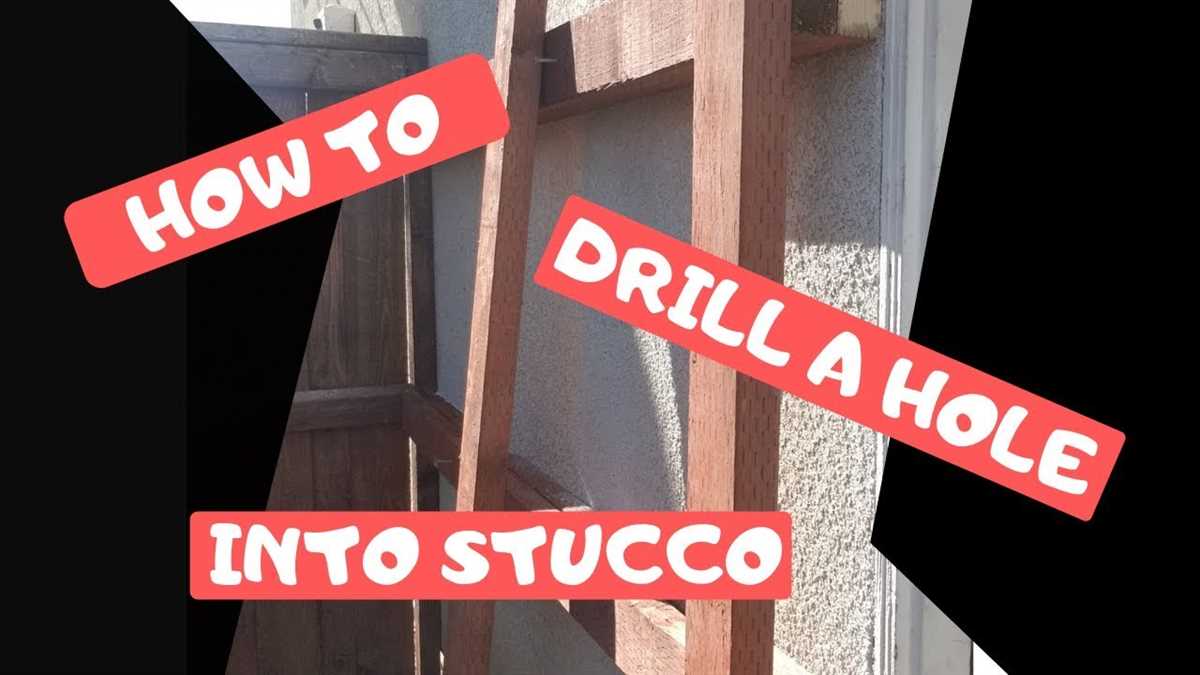
To contain the dust and debris generated while drilling into stucco, it’s important to create a dust barrier. Here’s how:
- Cover nearby furniture, fixtures, and surfaces with plastic sheets or drop cloths to prevent dust buildup.
- Seal off doorways and vents with plastic sheets and tape to prevent dust from spreading to other areas of your home.
- Use a vacuum cleaner or a damp cloth to clean up any loose dust and debris before and after drilling.
3. Use a Dust Collection System
Using a dust collection system can help minimize the amount of dust and debris that is released into the air. Consider using a vacuum cleaner with a HEPA (high-efficiency particulate air) filter attachment or a dust extraction system specifically designed for drilling applications.
4. Dispose of Dust and Debris Properly
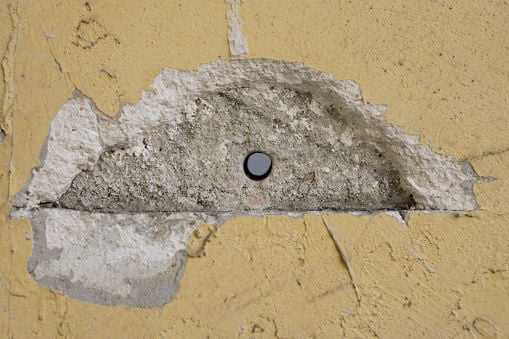
After drilling into stucco, it’s important to dispose of the dust and debris properly. Avoid blowing or sweeping the dust, as it can easily get into the air and spread. Instead, carefully collect the dust using a vacuum cleaner or a damp cloth, and dispose of it in a sealed bag or container.
5. Clean up the Work Area
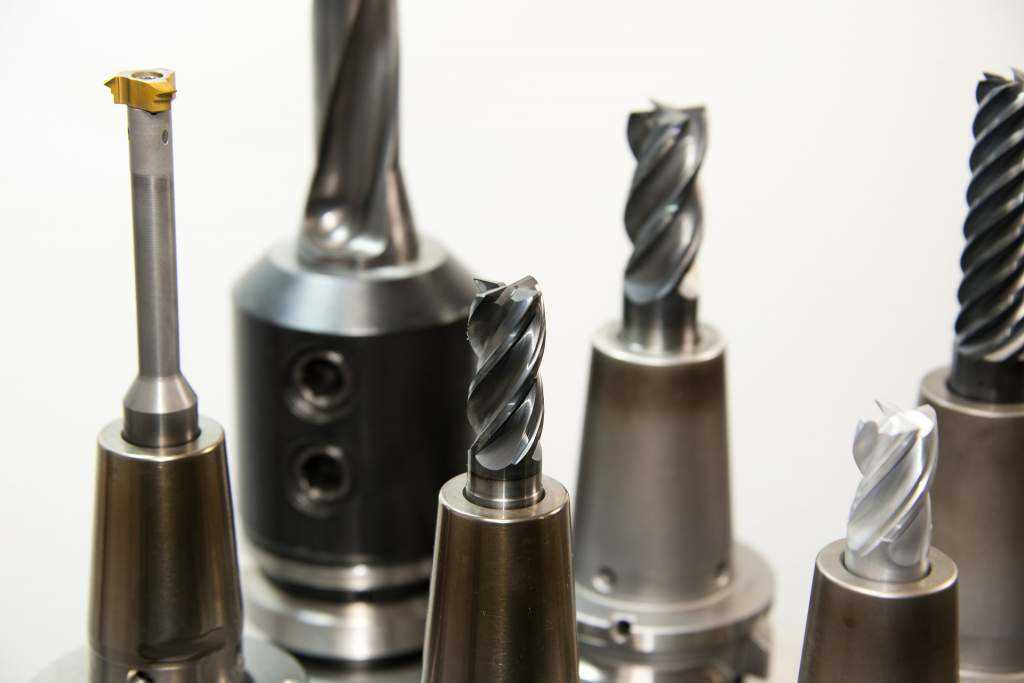
Once you have finished drilling into stucco, thoroughly clean up the work area to remove any remaining dust and debris. Use a vacuum cleaner or a damp cloth to clean the surfaces, and dispose of any collected dust and debris properly.
By following these steps to handle dust and debris, you can ensure a cleaner and safer drilling experience when working with stucco.
Troubleshooting Common Issues
1. Drill Bit Dulling
One common issue when drilling into stucco is the dulling of the drill bit. This can happen due to the hardness of the stucco material. To prevent drill bit dulling, it is important to use a high-quality drill bit designed for masonry work. Additionally, it is advisable to start drilling at a slower speed and apply steady pressure to prevent overheating and dulling of the bit. If the drill bit becomes dull during the drilling process, it is essential to replace it with a new one to ensure efficient drilling.
2. Cracking of Stucco
Another common issue that can occur when drilling into stucco is the cracking of the stucco surface. This can happen if too much pressure is applied while drilling or if the wrong drill bit is used. It is important to choose a drill bit with the correct size and type for the job to prevent excessive force and potential damage to the stucco. Additionally, it is recommended to mark the drilling location with a pencil or tape and start with a small pilot hole before drilling the full-size hole. This can help prevent cracking and provide better control during the drilling process.
3. Dust and Debris
When drilling into stucco, dust and debris can be generated, making it important to take precautions to minimize their impact. It is advisable to wear safety goggles and a dust mask to protect the eyes and lungs from airborne particles. Additionally, it is recommended to use a vacuum or dust extraction system to collect the dust and debris as the drilling progresses. This can help maintain a clean work area and prevent the particles from spreading and causing a mess.
4. Difficulty Anchoring
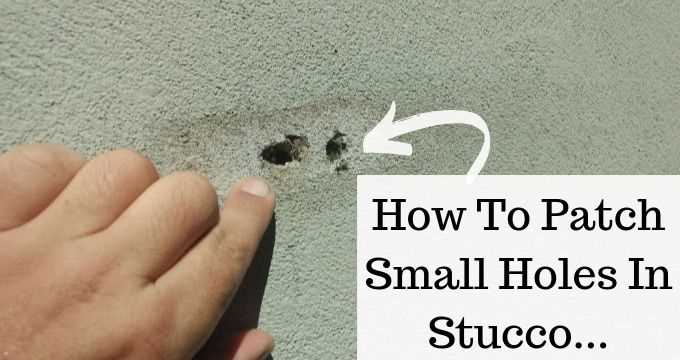
Anchoring objects to stucco can sometimes be challenging due to the nature of the material. One common issue is the difficulty of securing screws or anchors into the stucco surface. To overcome this problem, it is recommended to use wall anchors specifically designed for stucco. These anchors are designed to grip the stucco material securely and provide a reliable anchor point. It is also important to ensure that the hole is clean and free from any dust or debris before installing the anchor to ensure a secure fit.
5. Patching Holes
If any unwanted holes or cracks are formed during the drilling process, it is essential to patch them to maintain the integrity and appearance of the stucco surface. To patch small holes, a stucco repair patching compound can be used. This compound is readily available and can be applied to the hole using a putty knife or trowel. For larger holes or cracks, it may be necessary to consult a professional to ensure a proper repair that matches the surrounding stucco texture and color.
Finishing Touches and Cleanup
Once you have successfully drilled your holes in the stucco, it’s time to complete the finishing touches and clean up any mess that may have been made.
1. Remove the Drill Bit
Before moving forward, remove the drill bit from the drill. Make sure to do this carefully to avoid any injuries.
2. Fill the Holes
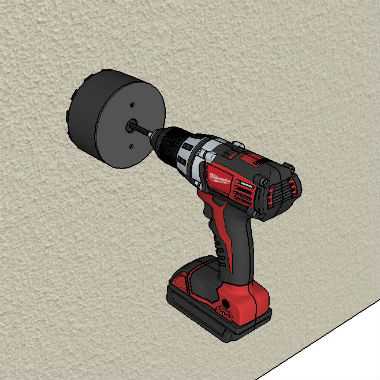
Using an appropriate filler, such as stucco patch or caulk, fill the holes that were drilled in the stucco. This will help prevent moisture from seeping into the holes and causing damage.
3. Smooth the Filler
Once the holes are filled, use a putty knife or a similar tool to smooth out the filler and create an even surface with the surrounding stucco. Take your time to ensure a seamless finish.
4. Allow the Filler to Dry
Follow the instructions provided with the filler to determine the drying time. Generally, it takes a few hours to fully dry. Avoid touching or disturbing the filled holes during this time.
5. Clean Up
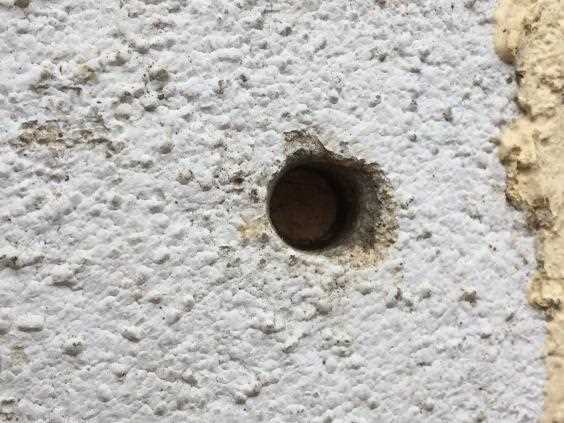
Dispose of any debris, such as stucco dust or chunks, that may have been left behind during the drilling process. Use a broom or a vacuum cleaner to clean up the area, ensuring it is free from any loose materials.
6. Inspect the Area
Once the filler has dried and the area is clean, inspect the holes to ensure they have been adequately filled and blended with the surrounding stucco. Make any necessary touch-ups to achieve a seamless and professional finish.
7. Paint or Finish
If desired, paint or finish the filled holes to match the color and texture of the surrounding stucco. This step can help further camouflage the holes and enhance the overall appearance of your wall.
By following these steps, you can successfully complete the drilling process and ensure a professional finish on your stucco wall.
FAQ:
What tools do I need to drill holes in stucco?
To drill holes in stucco, you will need a hammer drill, masonry drill bits, masking tape, a pencil or marker, safety goggles, and a dust mask.
Can I use a regular drill to drill holes in stucco?
No, a regular drill may not have enough power to drill through stucco. It is recommended to use a hammer drill for this task.
How do I properly prepare the surface before drilling holes in stucco?
To prepare the surface, you should clean it of any dirt or debris, and then apply masking tape to mark the spot where you will be drilling the hole.
What kind of drill bits should I use for drilling holes in stucco?
You should use masonry drill bits that are specifically designed for drilling into hard materials like stucco. These drill bits have a carbide or diamond tip for increased durability.
What precautions should I take when drilling holes in stucco?
When drilling holes in stucco, it is important to wear safety goggles and a dust mask to protect yourself from flying debris. You should also take care to avoid drilling into any electrical wires or plumbing pipes that may be behind the stucco.
How do I know where to drill the hole in stucco?
You can use a pencil or marker to mark the spot where you want to drill the hole. It is recommended to use masking tape to create a clean and straight line for drilling.
What should I do if I accidentally drill into a wire or pipe behind the stucco?
If you accidentally drill into a wire or pipe behind the stucco, you should stop drilling immediately and assess the damage. It is recommended to consult a professional to handle any necessary repairs.
Video:








